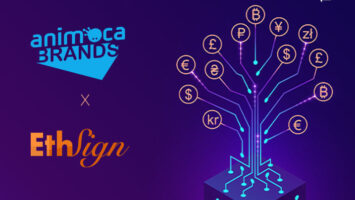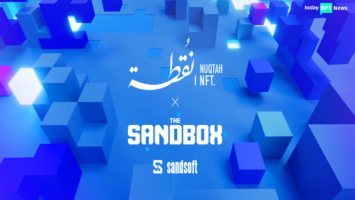Digital real estate acting as digital parcels of LAND in The Sandbox is transforming like a new class of asset which may display a particular side of futuristic digital social engagement, character over the internet as well as financial markets & metaverse. For owners of virtual LAND, everything is possible from utilizing it to renting it, selling it and making it a foundation for virtual presence.
LAND in The Sandbox is showcased on public blockchains through NFT; thereby, making sure it is impossible to copy every parcel but a location can be allocated in the metaverse.
LAND is a new concept and needs a better understanding. Considering it, let us examine LAND sales in The Sandbox through noteworthy statistics.
LAND price has strengthened
LAND price has gone stronger at a much higher level as compared to what it was during the beginning of the market rally activated by rebranding of Facebook into Meta in October last year when prices varied between $2,000 and $2,200 for each LAND.
Though traded volumes of LAND are far away from the highs of last year, LAND markets on decentralized marketplaces are benefiting from brisk trading. Each month, millions of dollars are traded in LAND volumes on an average. In The Sandbox, LAND is a liquid asset which can be sold by owners easily and those who are interested can have enough liquidity as well as offers on the secondary market.
LAND resellers grabbed 109% average return
In The Sandbox, over 10,000 digital parcels of LAND were resold this year. Based on the figure, it is clear that loss was generated by less than half of resales; however, most of them yielded positive returns. Throughout all resales, the average return is 109% and the median is 15%. Certain investors achieved extremely high returns since 2,000 LAND sales produced 100% or more returns.
Returns ranging between 10,000% and 100,000% were achieved by individual LAND sales.
LAND yields impressive return in long-term
Coming to the relationship between returns generated from reselling of LAND in 2022 and duration of days for which the LAND is acquired before selling.
In the graph, every blue dot displays a LAND’s individual sale. While the Y-axis shows return on investment, the X-axis shows the number of days for which the LAND was acquired before selling.
For every extra day for which a LAND was held, the average return grew by 1%. This shows that digital real estate might be an investment that is acquired for a long duration by owners.
No matter the results may be impacted by several factors, if connected with traditional real estate, the results make sense. After all, selling a portion of real estate or land in a short duration is useless, as they are long-term assets.
Active wallets depict positive hopes
Merely one parcel of LAND is acquired by 64% of LAND holders while 51 LANDS are acquired by 2% of holders. Among the 30% of all LAND, a blockchain address that belongs to The Sandbox owns the largest share of possession in terms of LAND.
The percentage of individuals having just one LAND parcel is quite high and indicates a healthy distribution.
With time, the buyers and sellers ratio balances roughly and suggests that individual market participants do not sell or collect LAND on a large scale. Also, no centralization of supply can be considered healthy in terms of the young market. Despite active wallets that interact with LAND being more as compared to December last year, an increasing trend for the total number of active wallets can be figured.
Each average owner has 8 parcels of LAND
In the first graph, it is clear that with time, the average number of LAND for each owner reduces. For instance, in the middle of 2020, the number was 18 and decreased by the middle of 2021 to 12 and in November 2022, it was just 8.
Centralization degree of the young asset class declines with time and can be considered positive for the development in the long run.
The below graph shows 116,850 LAND in circulation corresponding to a share of 70% of the entire LAND by November 2022. Thus, it can be concluded that despite a major part of the entire LAND being auctioned already, a major part remains unsold and there are possibilities of auctions on the primary market in the coming time.
LAND distribution turns equal with time
The Gini Coefficient refers to a statistical measure showing inequality inside a specific group. Perfect equality is shown by level 0 and maximal inequality is shown by a value of 1. This month, the value is 0.77 which indicates a degree of inequality.
The average Gini Coefficient is 8 for assets’ distribution in terms of comparison. According to the most crucial finding, Gini Coefficient is falling with time, which shows that LAND distribution is approaching an increased level with time. This is something positive if we consider crypto assets claims like decentralization.
The graph given below visualizes the percentage of all circulating LAND owned by the 1% and 5% largest addresses. The figure shows that the majority of LAND is owned by less owners and isn’t an abnormality. 81% of the LAND is acquired by the top 1% of owners.
Location and prices are inter-related in the metaverse
As obvious, the price of the parcels is dependent on the location of LAND. The table demonstrates an interconnection coefficient between the LAND price as well as the extent to which a particular LAND is located in a quadrant. While a positive value shows that if the LAND is in the respective quadrant, the prices will be higher, a negative value shows lower prices.
A number of reasons are behind as to why a LAND at position x may have more price than at position y. LAND buyers may have to pay more or less USD values depending on the volatility in the prices of SAND or Ether.
Partnership with Warner Music Group impacted the price
The Sandbox joined Warner Music Group in January 2021. The latter shared plans of establishing a musical theme park besides a concert destination in The Sandbox to organize musical experiences and concerts.
The blue dots show a LAND sale and the Y-axis shows the respective sales price in USD. The X-axis shows the Manhattan Distance to WMG’s ESTATE. The coefficient of a linear regression is shown by the pink line and the lines in gray picture 95% confidence intervals. Prior to the collaboration, the geographic proximity to ESTATE’s location was negligible but post the announcement, a major significant statistical relationship can be seen which shows that for each single point of distance away from the WMG ESTATE, the LAND prices decreased by an average of $7.68.
LAND adjacent to artists & brands matter
Among 16 ESTATES, more than average prices were paid for 15 LAND which shows the presence of signaling or neighborhood effects. Buyers tend to pay more owing to the proximity to reputed brands as a signal of standard and quality.
Impacts of crypto-based firms appear comparatively lower than media companies and personalities. This shows a higher signaling effect when the entity belongs to a “foreign” sector or displays a “surprise.”
For Atari, the price effect is quite high, probably because Atari is among the initial popular in The Sandbox.
Final words
The Sandbox’s virtual world assists in applying the next step of authorization of both stakeholders and users. Users of The Sandbox have their digital LAND, experiences or avatars and can rent, trade and transfer to other virtual worlds or can also utilize it in other ways.
Average LAND resellers gain over 100% return on investment. Moreover, LAND must be considered as a long-term investment. The distribution of LAND is turning quite equitable with time and shows a positive sign. Celebrities and brands are considered a signal of quality in the virtual world, which leads to neighborhood effects as far as LAND prices are concerned.
Digital real estate, when in the form of LAND, displays a vital element of advanced virtual worlds just like The Sandbox. LAND may prove to be a long-term investment as well as asset class. The demand for LAND will bloom in the coming time, provided The Sandbox and metaverse expand.









